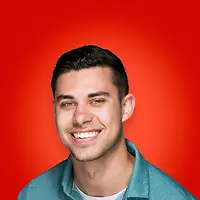In a perfect world, conflict would be avoided at all times.
However, our world is far from perfect, and people with different points of view run into conflicts all the time. When this happens, it can be easy to sit around and blame a difference in experiences, priorities, and backgrounds for causing the conflict. At the end of the day, the underlying reason the conflict occurred doesn’t matter - resolving it does.
There are a lot of different dispute resolution methods, but if you are looking for a more casual conversation to take the place of filing a lawsuit, conciliation is your best bet.
What is conciliation?
Conciliation is a dispute resolution method where conflicting parties meet with a neutral third-party, called a conciliator, to resolve their differences. During the discussion, the conciliator attempts to improve communication, better interpret the issue, and support the parties in reaching a settlement.
What is the difference between conciliation and mediation?
Mediation and conciliation are both methods of dispute resolution that involve a neutral third party. However, in conciliation, the third party will propose solutions, as opposed to mediation where the third party simply guides the conversation so the parties can find a solution themselves.
While they are different, mediation and conciliation both start from the same place: two conflicting parties attempting to reach a solution in an amicable manner that avoids taking the case to court. Of course, these parties have the option of resolving the issue themselves, but the neutral third party is a helpful addition to the conversation resulting in a mutually beneficial resolution.
Conciliation can be used to resolve both personal and professional disputes.
Role of the conciliator
The role, responsibilities, and involvement of the conciliator is what makes this process different from mediation.
By definition, a conciliator is someone who acts as a neutral third-party between two disputing groups in the hopes of resolving the conflict. During the conciliation process, the conciliator will make sure the issue is identified, ideate some options for solutions, consider any and all alternatives, and hopefully reach a settlement.
While the conciliator can recommend solutions they see fit, the disputing parties are in no way legally obligated to abide by the conciliator’s opinion. The only people that can actually settle the dispute are the conflicting parties. The conciliator is simply there to guide the conversation and make suggestions.
The key to being an effective conciliator is remaining neutral. The conciliator does not act on behalf of either party, and must remain impartial throughout the entire process.
Conciliation process
Conciliation can vary in terms of formality. Some parties can choose for the process to be casual and just involve a conversation, while others might want more structure from the conciliator.
Here is the typical process for a conciliation meeting.

The first step in conciliation is the meeting, which is where the two disputing parties meet with the conciliator.
Next, each party in the dispute will make a statement in which they express their side of the story, any details of the issue, and some preferred outcomes or objectives.
Taking the statements from each party into account, the conciliator will suggest a solution. As stated above, neither party is required to accept this offered solution as the final settlement.
If they like the offered solution, then great! If not, the conversation will continue until both parties have reached an agreement.
|
Related: If this doesn’t sound like the right option for settling your dispute, check out G2’s highest rated legal services so you can get the help you need.

|
Benefits of conciliation
A lot of people choose the conciliation route over other dispute resolution methods. It’s probably because of the following benefits it can provide to a conflict.
Solutions are recommended
The recommendation of solutions is what makes conciliation unique and beneficial. Without a recommended solution, conciliation would just be mediation.
Two parties experiencing a conflict can have a civil conversation attempting to resolve their situation but still see no results. That’s where a conciliator comes in. With recommended solutions, disputing parties can either accept the ideas given to them or adjust them to better fit their needs.
Also, the parties are free to select the conciliator depending on their expertise, experience, language, location, availability, etc.
Timely, inexpensive, and casual
Lawsuits are a pain. With conciliation, conflicting parties can set up a time that works for them, meet in an environment more casual than a courtroom, and pay a lot less than they would spend filing a lawsuit. Not to mention it takes a lot less time.
Confidentiality agreement
Another great thing about conciliation is that all parties usually agree on confidentiality. When parties know that nothing about the topic will be revealed, they can discuss the situation in an open, honest, and worry free manner.
Reconcile those differences
Conflicts happen. There’s no way around it. When they do, it is important for both parties involved to understand all of their options so they can choose the most appropriate way to resolve it. Conciliation is an effective one of those dispute resolution methods for people looking to settle a dispute while preserving their relationship.
 by Derek Doeing
by Derek Doeing
 by Mary Clare Novak
by Mary Clare Novak
 by Mary Clare Novak
by Mary Clare Novak